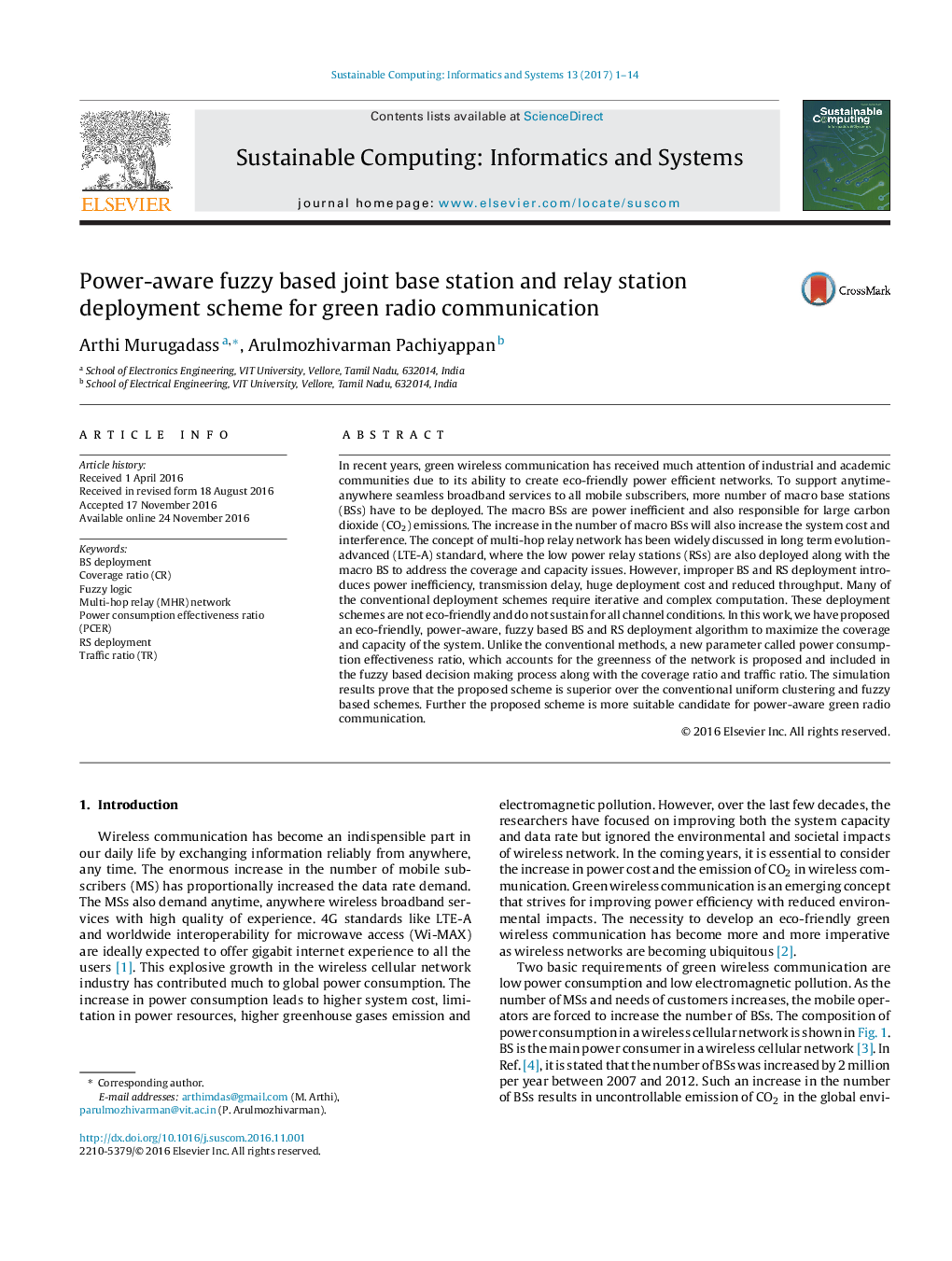| Article ID | Journal | Published Year | Pages | File Type |
|---|---|---|---|---|
| 4962769 | Sustainable Computing: Informatics and Systems | 2017 | 14 Pages |
â¢In 5G, green communication is very popular, which creates eco-friendly, power efficient networks.â¢The conventional base station (BS) and relay station (RS) deployment schemes require iterative and complex computations.â¢An eco-friendly, power-aware, fuzzy based BS and RS deployment algorithm is proposed.â¢The proposed scheme maximizes coverage, throughput and power utilization.â¢The proposed scheme is more suitable candidate for 5G based green radio.
In recent years, green wireless communication has received much attention of industrial and academic communities due to its ability to create eco-friendly power efficient networks. To support anytime-anywhere seamless broadband services to all mobile subscribers, more number of macro base stations (BSs) have to be deployed. The macro BSs are power inefficient and also responsible for large carbon dioxide (CO2) emissions. The increase in the number of macro BSs will also increase the system cost and interference. The concept of multi-hop relay network has been widely discussed in long term evolution-advanced (LTE-A) standard, where the low power relay stations (RSs) are also deployed along with the macro BS to address the coverage and capacity issues. However, improper BS and RS deployment introduces power inefficiency, transmission delay, huge deployment cost and reduced throughput. Many of the conventional deployment schemes require iterative and complex computation. These deployment schemes are not eco-friendly and do not sustain for all channel conditions. In this work, we have proposed an eco-friendly, power-aware, fuzzy based BS and RS deployment algorithm to maximize the coverage and capacity of the system. Unlike the conventional methods, a new parameter called power consumption effectiveness ratio, which accounts for the greenness of the network is proposed and included in the fuzzy based decision making process along with the coverage ratio and traffic ratio. The simulation results prove that the proposed scheme is superior over the conventional uniform clustering and fuzzy based schemes. Further the proposed scheme is more suitable candidate for power-aware green radio communication.
